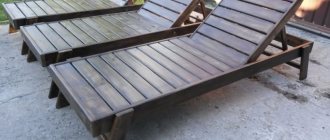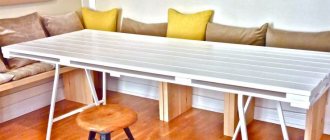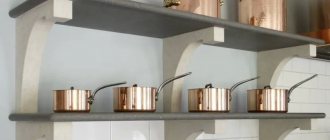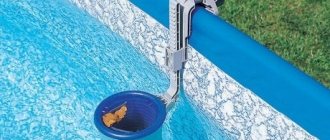People have been breeding animals for personal purposes for thousands of years. Even in modern realities, poultry farming is still a relevant activity. Poultry farming means always accessible, environmentally friendly meat and eggs, as well as affordable and high-quality fertilizer for the garden.
In order for the livestock to feel comfortable, it is necessary to pay careful attention to the organization of the poultry yard. So, in addition to food, the chicken should have constant access to fresh water. Dehydration can have an extremely negative impact on the bird.
Requirements for drinking bowls
Manufacturers are focused on large farms with large livestock, and their few products for small farms do not always meet the parameters. Chicken owners know that this bird can hardly be called neat. Drinking water in an open container very soon turns out to be dirty, and if the container is light and poorly secured, then especially active individuals can turn it over.
All this forces owners to invent devices that will meet the following requirements:
- Reliability, stability. The structure is made of durable materials and is often additionally reinforced. This way, the water will not spill, and if a full, heavy container falls, it will not injure the birds and young animals.
- Ease of use. It should be convenient for the bird to drink, and for you to fill and disinfect the container.
- Maintaining cleanliness. An open source of water quickly becomes polluted, which is bad for the health of the bird. A drinking bowl for chickens or chickens should have a closed design as much as possible.
Compact solution for a small chicken coop Source ytimg.com
- Right size. The volume must correspond to the flow rate. If you place a container that is too large, the water will spoil, and stale water is a source of disease for birds.
- Safety. Use high-quality materials to make the tank (no lead or suspicious plastic), process the design parts so that there are no sharp corners or protruding wires.
Bunker
A duck feeder hopper is usually constructed from metal or chipboard sheets.
The bottom of the bunker structure resembles a tray structure. It is better to attach the container for bulk food to the wall, so you can only approach it from one side. It is more convenient to hang on metal hinges for hanging cabinets.
What you need to make a feeder:
- Sheet or plate.
- Slats or bars.
- Saw or jigsaw.
- Drill and screws.
- Ruler.
- Pen.
- Two loops.
For manufacturing, take 4 sheets: 2 - for the side walls (the same size), 2 - for the front and back walls (also the same size). All sheets are fastened so that they form a quadrilateral shape. In this case, the front should be diagonally, going deep into the structure - this will ensure a gradual supply of feed. It will be possible to fill the bunker completely and it will slowly roll down to the tray.
Varieties of homemade drinking bowls
In search of an answer to the question of how to make a waterer for hens or chicks, owners discover several designs with varying degrees of convenience, differing in the way they supply water. The following devices are common in private chicken coops:
- Nipple. Ideal option for young animals. Such installations supply water in doses (through nipple valves), and it is completely protected from contamination; the birds will not be able to spill it or get wet. There is a type of nipple devices - drip; they are complemented by a drip eliminator.
Homemade and industrial drinking bowls Source moyaptitsa.com
- Vacuum. Economical, easy to manufacture and operate device; you don’t have to spend money on purchasing parts (as in the previous version). The use of this device is somewhat limited; it is more suitable for chicks than adult chickens.
- Siphon. Their action is based on the law of communicating vessels. This container is easy to fill, but it will also have to be cleaned periodically.
- From pipes. They are more difficult to manufacture, but they are more reliable in operation, and they can be used for large livestock.
It is noticeable that in the described options, the water supply is regulated in two ways. Vacuum drinkers provide automatic supply of liquid into the bowl; it will always be at the right level. You only have to regularly add water to the tank. The remaining devices supply water “on demand”: adjustment is carried out by the chickens or the owners, respectively.
The size must be appropriate for the purpose. Source stocksy.com
See also: Catalog of companies that specialize in complex installation of internal engineering systems
Float system
The purchased design consists of containers mounted on a horizontal axis. Water is supplied through the hole. As the bowl is filled, it lowers and uses a special nozzle to block the access of water. After emptying, it rises and the liquid flows again.
There are quite a few varieties of this type of device, but it is the drinking cup options that have gained great popularity. Craftsmen have developed many similar systems. These designs are automatic and work the same way as a float system in a toilet:
- Birds drink from a trough or several troughs filled through pipes, from a bottle (barrel) of water. This container contains a float mechanism connected to the faucet lever. Water from the tap is drawn into the barrel, and as it fills, the float begins to rise along with the water. Moving upward, he turns the handle of the faucet connected to it and closes it at a certain level. When the troughs are emptied by birds, the amount of water in the container will decrease, the float along with the liquid level will go down, the tap will open, and the process will repeat.
- The float is connected to a bottle or bowl with liquid mounted on an axis parallel to the drinking container. As the liquid level decreases, the float will go down, dragging and turning the cup. Water will fill the trough. Experimentally, you can determine the location of the axis so that when the bowl is full, it is in equilibrium when the drinking container is full and the float is at the top. To prevent the bowl from tipping backwards, a simple stopper is needed. This system is effective for 1-2 hours. After that it is filled again.
Nipple drinker
Homemade drinkers for chickens or chickens with a nipple system provide birds with access to water without human intervention. The design is also called a drip design, since water flows automatically and is dosed drop by drop. It is installed according to the following plan:
- The basis of the installation is a square plastic pipe (for example, 22x22 mm), the required number of nipples (possibly with linings), the same number of drop eliminators, a plug, a coupling, and an adapter. The tools you will need are a drill (or screwdriver), a drill of a suitable size, and a vessel for storing water.
- First, cut a piece of PVC pipe; when choosing the length, you should focus on the number of birds (one drinker serves 10-15 chickens). In a household, the drinking line rarely exceeds 1.5-2 m.
- Marks are placed on the pipe for future holes. The distance between them is set to approximately 15-20 cm, this provides convenient access, the birds will not interfere with each other.
Nipples for chicks are placed more often Source vetboxonline.com
- Drill the required number of holes to fit the size of the nipple or the inside of the lining. They should fit flush into the hole, without play.
- Drop eliminators are placed on the pipe near the holes and secured with a latch.
- A coupling with an adapter is installed at the front end of the pipe, connecting the system with a hose leading to the water supply source.
- A plug is put on the far end of the pipe and clamped with a clamp.
- Brackets (mounts) are installed on both sides (closer to the ends of the pipe). They are mounted on the pipe using latches, and the free ends are fixed to the base (for example, a wall or mesh). Thanks to the fasteners, the drip drinker for hens or chicks will be securely fastened, and the pipe will not be able to rotate.
Option with drip eliminators Source impex.nl
Automatic drinker with dispenser
Required tools and materials
The design with a dispenser takes longer to manufacture. The circuit is more complex than the previous options, but the device is reliable.
To make an automatic drinker with a dispenser you will need: a plastic tube, onto which cellophane is usually screwed. Its length depends on the number of chickens.
You need polystyrene foam, wooden cork, copper or aluminum wire, a piece of rubber (a regular eraser will do).
Also take a frame seal with a soft rubber band, glue, nails, and a pen case with a pointed end.
First stage
Fold the wire and wrap the nail tightly on the right and left sides. The result is a design with a “head” that easily rotates on the nail.
Now we need to make its area larger. To do this, screw a piece of hard rubber into it and secure it tightly with the “head” of the wire. Cut off the excess part of the elastic with a knife so that there are no protruding ends.
Take a wine bottle cork and use a drill or sharp awl to make two small holes. Insert two free ends of the wire into them, which form a “swinging” structure. They must be long enough to fit firmly into the cork.
Second phase
Now we need to prepare the groove. To do this, cut a piece of soft plastic pipe horizontally. Glue a small piece of foam with a drilled hole to one end. Use rubber cement because acetone will begin to dissolve the foam when left in contact with it for a long time.
Using a soldering iron, attach a piece of plastic to the other end of the tube and glue it with rubber cement to seal it tightly.
Make a through hole in the side edge of the groove. Cut a section from the pen with a sharp end and two small pieces in the shape of a washer. Insert a nail into the hole you made and put a washer on it.
Then thread the “swinging” structure and secure with a second washer. Press the nail down so it goes through the second side wall.
Vacuum
Compared to a nipple automatic drinker for chickens, the vacuum device is simpler in design. To build such a device, you need to fill a jar (or other container) with water, cover it with a bowl, turn it over and place it on a flat surface. Part of the liquid will end up in the bowl, the rest of the volume will be held in the jar due to the pressure difference (a rarefied atmosphere is formed inside the jar, and its pressure is less than that of the surrounding air).
The design looks perfect: the chickens quench their thirst, and the level does not drop, since the water comes from a can. The device is simple, does not require costs, and is easy to maintain. However, it also has disadvantages:
- This option is only suitable for small flocks or temporary use (for example, chickens).
- If the device is small, you will have to add water frequently.
Using the laws of physics Source yandex.net
- If the tank is large, the water may stagnate, especially in hot weather.
- The bowl will get clogged regularly and will have to be washed frequently.
Frost protection
If the chicken watering system is connected to a water supply, then in the cold winter, due to the pipes being in frozen ground, cold liquid flows through them. Chickens drinking this water will get sick and die. To avoid colds in birds, it is recommended to slightly warm up drinking devices.
The cheapest method is to make wooden boxes underneath, insert simple light bulbs inside them and connect them to the network with thick insulated wires. The cable must be secured under the floor or buried so that birds do not damage it.
An effective, but more expensive way is to install a tank for heating water (Termex, Ariston or another) in the room and set it to the desired temperature. Then it will function automatically, and the bird owner will not have to watch it.
For novice farmers, such a variety of original ideas for making systems for quenching the thirst of birds can be confusing, and they will not be able to repeat some designs themselves. Don’t be afraid, you can make devices that you can repeat yourself or call on friends for help.
Siphon
Siphon structures are a type of homemade vacuum drinker for chickens and hens. The system also requires monitoring and periodic addition of water. But such devices are usually used if the container is large enough and it is installed outside the coop.
To get a working siphon system, the tank (or other container) is installed at a certain height. A flexible tube with a stopper (tap), 5-8 mm in diameter, is hermetically attached to the bottom of the tank. The tube is directed through the wall of the chicken coop down to the bowl, and fixed to the wall. The lower end is lowered into a bowl.
Siphon drinker in action Source wikimedia.org
Automatic
The peculiarity and convenience of an automatic waterer is that when the chicks drink water, it fills the entire container again. It is better to take a 0.5 liter bottle as a basis. You also need clamps and a saucer from which the chicks will drink.
We nail clamps to the walls. We substitute the saucer. Pour water into the bottle and insert the neck down into the clamps so that less than 1 cm remains.
You can also cut off a piece of the bottle from the top and when the water runs out, calmly top it up.
From a plastic pipe
You can make a drinking bowl for chickens from a sewer pipe if the scraps left over from the sewer system are collecting dust on your farm. The optimal solution would be a PVC pipe with a diameter of approximately 10 cm.
The technology is attractive in its simplicity: several holes are cut in the pipe using a sharp hacksaw, file or hot knife. Plugs are attached to the ends. Then the pipe is fixed in the right place and the convenient device is ready for use. The device has only one limitation: only an adult bird can drink from the pipe.
The process of turning a pipe into a drinking bowl Source ytimg.com
Step-by-step instruction
A compact automatic feeder can be made from the following components:
- plastic bottle, 1.5 or 2 liters;
- plastic tray: can be made from a 5-liter bottle by cutting off the bottom;
- watering can.
Here's what to do:
- At the bottom of the bottle, at the very bottom, triangle-shaped holes are cut around the entire perimeter. This task can be easily accomplished with a utility knife.
- We place the bottle in the center of the tray and screw it to it with a self-tapping screw.
- We heat the pieces of wire and solder them into the wall of the tray at a distance of 3 cm from each other. This “picket fence” will prevent the chicks from climbing into the feeder, which would lead to clogging of the feed. The ends of the wire pieces must be bent so that the chickens do not get hurt.
- All that remains is to insert a funnel into the neck of the bottle and secure it in some way, for example, wrap it with wire.
We pour grain into the bottle through a watering can and invite the pets to the table.
Using the same scheme, you can make a feeder with a more capacious hopper: instead of a bottle, you need to use a bucket, and instead of a tray, you need to use a sectional feeder for your pet.
If there are plastic parts of the pipeline left over from the installation of the sewer system, then the feeder can be made from them. Here's what you need:
- a piece of polyethylene pipe with a diameter of 120 - 150 mm and a length of at least 60 cm;
- tee of the same diameter;
- two 90-degree bends.
Pipe feeders
We proceed in the following order:
- The middle branch of the tee is put on the end of the pipe (you should get a T-shaped structure).
- We connect 90-degree bends to the tee branch pipes, turning them in the same direction where the pipe is facing.
- We cut the branches with a hacksaw so that when installing the feeder on the floor with the tee facing down, their edges are located at a height of 8 cm and are horizontal. The trimmed branches will be trays, and the vertical pipe will be a bunker.
- It remains to fix the feeder in a vertical position. You can screw it to the wall using clamps or self-tapping screws; You can make holes in the wall of the pipe, thread a wire through them, and use it to screw the feeder to some stand or other object.
If the chick flock is too numerous, the trays must be made differently so that there is enough space for all the chicks. Otherwise, weak individuals will be constantly pushed aside by strong ones, which can even lead to their death.
Instead of bends, you need to connect 30 cm long sections of pipe to the tee, and then cut off half or a third from them, so that the pipes turn into trays. You need to install plugs at the ends, also trimmed.
Please note that when making a tray from a pipe, it does not need to be cut to its entire length. The part that is threaded into the tee should remain round - it will hold the tray in the shape of a half-cylinder, preventing it from unfolding into a plate. It is advisable to solder a mesh into the walls of the trays, which will not allow the chicks to climb into the food
It is advisable to solder a mesh into the walls of the trays, which will not allow the chicks to climb into the food.
We should also talk about feeders for broilers. As you know, this breed is characterized by rapid growth, which is why such chickens absorb food more actively than others.
So that the feeder does not have to be refilled too often, we suggest making it from the following materials:
- plastic bottle designed for installation on an office cooler;
- plastic bucket with handle;
- a piece of pipe with a diameter of 50 mm and a length of 150 mm.
If everything is ready, let's proceed:
- In the lower part of the bucket, at a height convenient for the chicks (depending on their age), you need to cut openings through which the bird could freely stick its head. We grind the edges of the openings so that there is no risk of injury from them.
- We cut holes in the shape of a triangle in the pipe wall almost at the very end. Their sizes should be such that the food can fall out freely.
- Fill the bottle with grain or other dry food.
- We put a piece of pipe on the neck of the bottle so that the holes cut in them are at the top.
We put a bucket on top, after which the feeder needs to be turned over. Through a hole in the pipe, the grain will be poured into a bucket, from where the chickens will consume it.
Briefly about the main thing
There are many designs that can provide chickens with fresh drinking water. The optimal choice would be options that are sustainable, safe and easy to use. Thrifty owners strive to make a drinker themselves, and nipple, vacuum and siphon varieties, as well as products made from PVC pipes, are suitable for this.
The nipple design is the most difficult to manufacture, but it works automatically and is capable of providing drinking water to a large number of birds. The simplest is the vacuum system, which is ideal for chickens.
Ratings 0
conclusions
To raise chickens, it is necessary to create comfortable living conditions for them, provide them with high-quality feed, as well as clean water. Proper watering of chickens of any breed, such as Ayam Tsemani, Legbar and others, promotes good digestion of food, and therefore has a positive effect on egg production and weight gain. There are several types of drinking bowls that you can make with your own hands, without the help of any experienced professionals:
- Vacuum drinking systems.
- Siphon drinkers.
- Nipple.
- Drinkers made of PVC pipes.
These types of drinkers have their advantages and disadvantages, but they are still much better, more economical and more hygienic than the usual bowls, pots, and plastic containers with water near poultry houses. Conventional drinking containers are easy to use, but have many disadvantages: frequent contamination, water must be brought several times a day. And especially in the warm season, the risk of pathogenic bacteria appearing in dirty, stagnant water increases.











